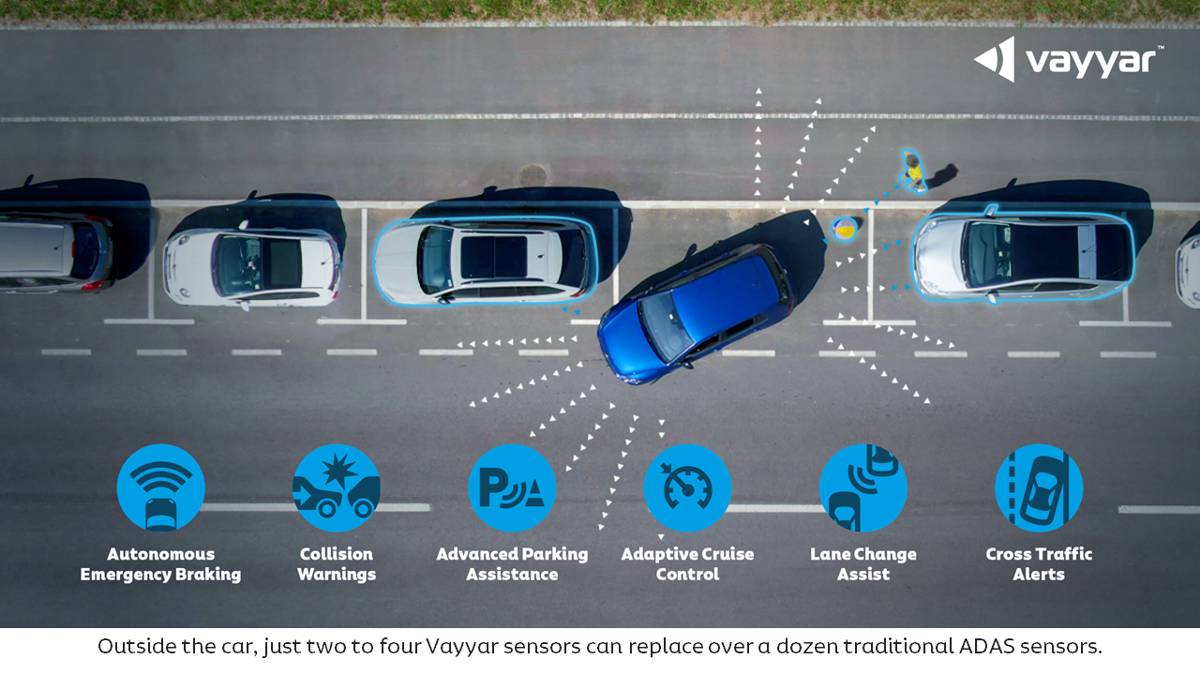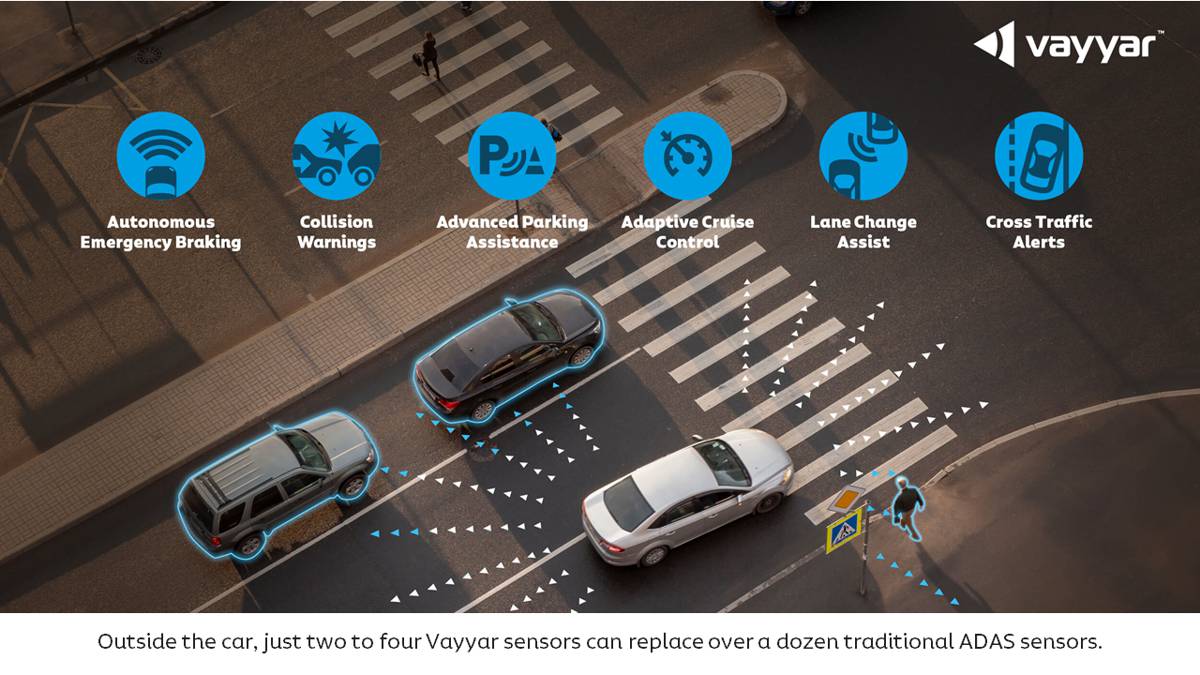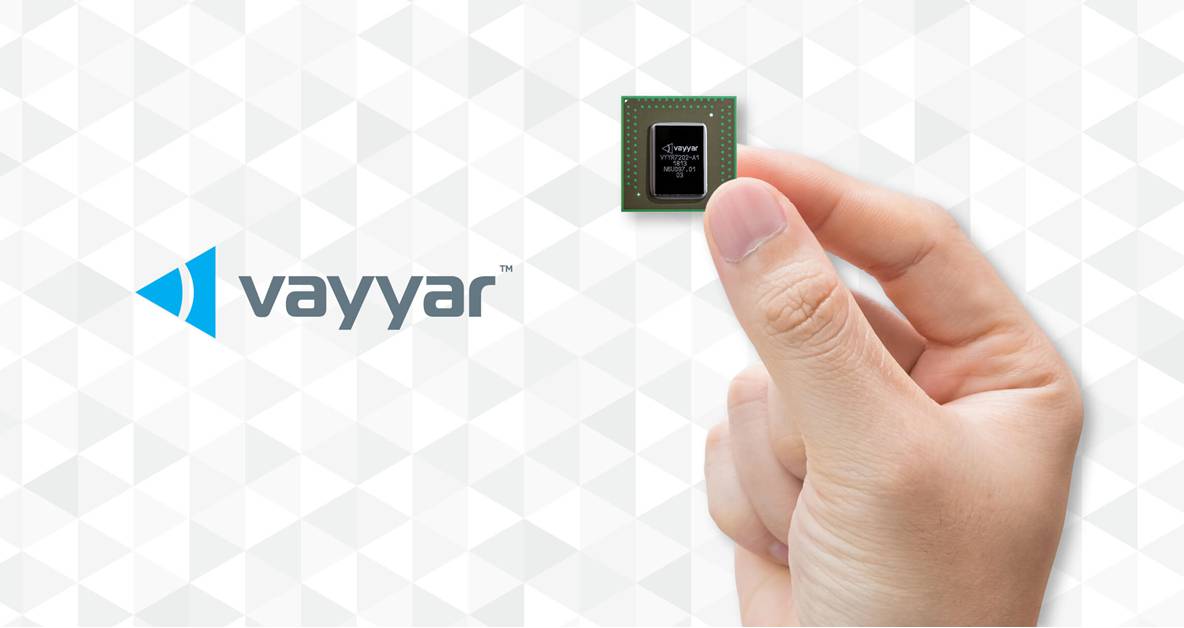Vayyar 4D imaging radar sensor set to revolutionise automotive safety
Vayyar, the global leader in 4D imaging radar technology, is transforming automotive safety with its production-ready Radar-on-Chip (RoC) platform, which enables OEMs to achieve leading-edge vehicle safety while achieving unprecedented cost efficiencies.
Vayyar’s automotive-grade, AEC-Q100 qualified RoC is a game-changing solution. The chip features up to 48 transceivers, an internal digital signal processor (DSP) and microcontroller unit (MCU) for real-time signal processing. Capable of seeing through objects and able to operate effectively in all weather conditions, Vayyar’s single-chip solution can replace over a dozen other sensors and negates the need for expensive LIDAR and cameras.

Within the cabin, one multifunctional Vayyar chip can support a multitude of systems, including intruder alerts, Child Presence Detection, enhanced Seat Belt Reminders and eCall to alert emergency services in the event of a crash. It delivers a revolutionary level of safety, utterly unobtainable with traditional single-function sensors.
This breakthrough solution fulfils the functions of multiple chips by sensing, computing, processing, mapping and imaging targets with just a single radio-frequency integrated circuit (RFIC). The platform supports Vayyar’s mission to ensure that safety is available and affordable for all car manufacturers and their key suppliers, at a time when modern cars are becoming increasingly crowded with sensors.
Today, there are more than 100 sensors in a typical car, with analysts predicting that this will double by 2030. However, Vayyar’s new production-ready RoC offers unprecedented potential and a unique opportunity to cut cost and complexity while improving safety.

“By replacing multiple sensors with our multifunctional, scalable platform, the possibilities for simplicity and savings are substantial. In addition, regulations and standards are rising and to achieve five-star ratings, automakers are moving away from traditional solutions,” explains Ian Podkamien, Head of Automotive at Vayyar.
“Our multi-award winning technology, recognised by organisations such as CLEPA, equips vehicles with the instincts to save lives, providing uncompromising and affordable safety. What’s more, its price point is similar to a single-function 3×4 2D/3D radar solution, but with substantial added value.”
The platform provides exceptionally high resolution and an extremely wide field of view to deliver unsurpassed precision and detail. The robust sensor is also engineered for scalability, seamlessly facilitating the deployment of emerging features via over-the-air (OTA) software updates. This effectively future-proofs vehicles as new safety requirements and standards emerge.

Central to the platform’s potential is its ability to reduce complexity, in order to cut direct and indirect costs. Vayyar has the in-house expertise to deliver a full end-to-end solution, including hardware, software, development and testing resources, streamlining the integration process for Tier 1 suppliers and OEMs to minimise effort, costs and risk.
By providing a high-performance, cost-effective and multifunctional sensor, Vayyar’s technology closes the gap between rising safety demands and feasible tech adoption, ensuring that affordable, uncompromising safety is available to all.




















